Woodworking - introduction
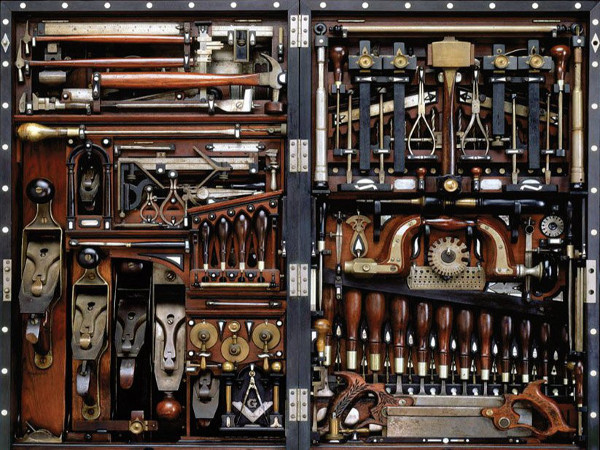
“Woodworking minus patience equals firewood.” – anon
Contents
What is woodworking?
It’s the creation of objects from wood using hand or power tools. Woodworking is more diverse than it first seems – it includes everything from rustic green woodworking to intricate and precise cabinet-making. Carpentry is the name given to this activity by most people, but in the industry this refers more to the construction of structural woodwork in housebuilding which is usually carried out on site. People who make doors and windows and similar objects are called bench joiners and are usually based in a workshop. A good woodworker knows how to get the best out of different materials, from natural timber to plywood or strandboard. It’s not just about proficiency with tools, but also design and planning.

Wood is such a workable material, with the simplest of tools, it would have been one of the first things humans used to create shelter and tools. There’s a huge range of tree species, which come in different grades and for most conventional work must be dried to prevent movement after it has been worked. There are many different specialist woodworkers – for example, chairmakers, barrel makers, wheelwrights, shipwrights, woodcarvers and instrument makers. Each craft has its own specialised tools – for example chair makers have travishers for hollowing chair seats to make them more comfortable, and woodcarvers have a huge range of gouges for cutting different shapes. Woodworking techniques enable us to create things as diverse as houses, boats, furniture, shelves, doors, windows, animal housing, workbenches, utensils, picture frames, toys, containers and much more.

1. gent’s saw, panel saw, japanese saw, tenon saw
2. cordless drill, battery & charger, set of drill bits and screwdriver bit
3. coping saw, compass saw, fret/piercing saw
4. steel ruler; Stanley knife; marking knife; left – marking gauge with a pin for marking with the grain, right – cutting gauge used to mark across the grain without tearing the fibres as a marking gauge would do; above that is a combination square and a steel engineer’s square; tape measure and very sharp HB pencil.
Woodworking encompasses a large quality range too – a piece of work can be held together with just nails, or intricately-made joints; wooden structures in houses are commonly held together with nails and screws, but a chair or an older house can contain mortice and tenon joints. Experienced woodworkers use a range of different joints for different scenarios, to resist the different forces exerted on the finished work. Examples of joints include mitre, bridle, finger, box, housing, dovetail, butt, tongue & groove, mortice & tenon, halving or lap joints. Some joints are easily done with hand tools, and others require power tools – such as biscuit or domino joints, which are designed to save time and are very strong.

What are the benefits of woodworking?
- It’s about using a renewable, biodegradable and non-toxic resource – wood – to make useful, environmentally-friendly and healthy items for yourself, your friends and family.
- Hand-made items are unique and beautiful, and they make great presents.
- Woodworking skills enable you to carry out repairs on your home.
- Woodworking is good for you – it’s a meditative, therapeutic, satisfying hobby or career, it’s good exercise and can save you money.
- If you’re really keen (and good), you could consider starting a small business, and help steer some money away from the ubiquitous flat-pack giants.
- The environmental and exercise benefits are greater if you’re using hand tools – lower embodied energy and no electricity required, just muscle power.
- The environmental benefits are even greater if those hand tools are second-hand; many old tools are made of very high-quality steel, unmatched by tools of the same price today.
- Wood is very durable; wooden objects can last several lifetimes if they’re well-made, and solid wooden furniture is very repairable. There’s great satisfaction to be had from making things that can be handed down through the generations; but even if they come to the end of their life, they can be recycled or used as firewood, rather than ending up in landfill.
- It can stimulate demand for local timber, and therefore tree-planting.
What can I do?
To get started doesn’t have to be expensive. Wood is a readily-available material, and sometimes free if you know a friendly landowner or tree surgeon, or if you recycle old pieces. We’d suggest that you steer away from MDF – it contains toxic ingredients like formaldehyde, and so there are health risks associated with cutting it. There are times when using other man-made materials like plywood makes sense – it’s much more economical for making box-type structures such as wardrobes, kitchens and other cabinetry. Using solid wood in that situation can be difficult and expensive.
Attend a woodworking course to gain skills and the confidence that you know the right way to approach a job. You don’t need lots of gear – just start, and it will accumulate over time. You don’t necessarily need a dedicated workshop either. You can work outside for much of the year, but you need a dry space to store your wood, and something to work on. It can be a simple wooden box or bench – maybe one of your first projects could be to make a workbench.

Tools
Tools have to be very sharp – enough to take the hairs off your arm. Tools don’t come fully sharpened when bought unless they are of a very high quality. They’ll come with a ground bevel which needs to be refined with a sharpening stone of fine grade. There are different sharpening stones – such as diamond, ceramic or waterstones, and they each have their fans. The basic principle is to start with a precisely-ground, 25-degree bevel made on an electric grindstone or very coarse sharpening stone. You then progress to a finer sharpening stone and hone the bevel at 35 degrees, then hone the back flat and polish the result on a leather strop.
Most specialised tools have to be ordered from mail order companies unless youre lucky enough to live near a supplier. It’s a good idea to cultivate a relationship with your local hardware store where you can also get advice on tools and techniques. Used tools from second-hand shops or specialist market stalls are great – but you need to really understand the tools first to avoid damaged or unsuitable ones. If you buy a set of second-hand tools, there are companies you can send them to to be sharpened, or again, you can try your local hardware store. Most old saws can be resharpened, but most modern ones can’t. Find good quality old tools that can be sharpened – you don’t want your tools to be disposable. Be wary of buying an old tool that doesn’t look as if it’s been used – it could be because it wasn’t very good.
You can make a wooden toolbox to store your tools, so that they don’t get damaged. A plastic one is useful if you’ll be working outside, or a traditional canvas carpenter’s bag is easy to carry. If you’re using power tools you’ll need goggles, gloves, dust mask and ear defenders.

Saws
A saw’s teeth are alternately splayed (called the ‘set’), to cut slightly wider than the body of the saw, so that it has room to move through the cut. If a saw tends to get stuck, it’s lost its set. There are different saws for rough or fine work – the more tpi (teeth per inch) the finer the saw. There are saws for cross-cutting (across the grain) or rip-cutting (with the grain). A rip saw has fewer tpi and a larger gullet (space between the teeth) to help remove waste material.
- Standard builder’s/panel saws are tough; they have no ‘back’ and so they’re flexible; they have a 90° on the handle, which can be used in marking out; great for larger work.
- Carcass saws are smaller, with a heavier steel back to keep the blade straight.
- Tenon and dovetail saws are similar to carcass saws but are smaller still, for making joints; dovetail teeth tend to be coarser because dovetailing is a ripping operation.
- Gent’s saws have a simple straight handle, so they can be high quality, but still cheap.
- Japanese saws cut with a pulling rather than a pushing action, and so the blades can be much finer; great for joint cutting.
- There are four types of saw for cutting curves – in order of size from the smallest: piercing saw; fret saw; coping saw; frame saw. These saws have a bow-shaped frame and removable blades – the bigger the bow, the further into the work you can get. You can vary the blade angle on a coping saw. There’s also a compass saw with no bow, like a hand jig-saw for cutting in the middle of jobs where a bow would get in the way.
Other useful tools
- Hammer.
- Cordless drill and set of drill bits. Buy a good quality drill and it will last for years; get two or more batteries. A traditional hand-drill can be used for small holes; larger holes can be tackled with a brace and bit, or a spade bit in a power drill.
- Measuring tools: a good tape measure with a scale you find easy to read; metal rule; combination square (combined ruler, spirit level and square) – make sure the turn screw is tight or it won’t be square.
- Marking tools: pencils and marking knives (a Stanley blade is thin and flexible, so the wood grain will make it inaccurate – but it can be used for inaccessible parts of dovetail joints etc.); marking gauges for marking a line parallel to an edge – there are two types, one with a pin for marking with the grain and another with a little blade for marking across the grain. A line made with a blade or a pin can’t be rubbed out like a pencil line, but you can drill a hole in the other end of your gauge to fit a pencil for rougher lines, e.g. showing where a line of screws should be placed.

- Plane: the most common is a no. 4; the longer the plane, the more accurate the surface produced.
- Pincers and pliers, in case you need to pull out nails or damaged screws, e.g. when recycling wood.
- Chisels, from 3mm to 2 inches (yes, that’s mixing metric and imperial – but woodworkers tend to do that); if you only have one chisel, make it one inch wide.
- Wooden mallets for the chisels (metal hammers damage the handles).
- Spokeshave: like a short plane with side handles that you pull towards you, for curved surfaces.
- Clamps: you can never have too many, and there are several types – sash clamps are long metal bars with an adjustable shoe; they can be made of aluminium (cheap and light) or T-section iron (heavy and strong). Sash clamps and G-clamps (that screw down onto the work) exert high-pressure, and F-clamps and quick-grip/action clamps (a modern development of the F-clamp) have rubber heads that won’t mark the work and are quick-release and lower-pressure.

Sundries
You’ll need a stock of ‘stuff’, or you’ll have to keep running to the shops. Things like:
- Abrasive paper in various grades – from 80-240 grit: the numbers indicate the particles per square inch – the larger the number, the finer the paper. You start smoothing with a rougher grit, then move to the next grade and so on. 120 grit is a useful all-round grade. Don’t get traditional garnet paper, as it tends to wear out quickly. Buy a good quality aluminium oxide or silicone carbide paper.
- Glues: PVA is water-based and the least toxic, and comes in waterproof or interior-only grades. Mitre glue comes in two parts – glue for one side and activator for the other; it’s for mitre joints, which can slip if assembled with PVA, as it acts as a lubricant. Polyurethane glue creates a high-strength bond, even if the wood is wet – it’s perhaps the least environmentally-friendly, but what you make will probably last longer, and you would use comparatively little. There are also formaldehyde-based glues (often used in veneer work as they are cured by heat) that are very useful in certain situations, but can cause dermatitus, so don’t use unless you really need to.

- Fillers, dyes etc: usually bought for a particular job, and then kept on a workshop shelf until they’re needed again. There are three different types of filler: one-part filler, which is water-based and odour-free, and is smeared into gaps; two-part resin filler dries very quickly, and very hard so that it keeps its shape and can be worked like wood; wax fillers for filling fine cracks in furniture – they come in different colours to match different woods.
- A selection of screws and nails in different sizes.
Specialist(s)
Thanks to Tom Trimmins for information.


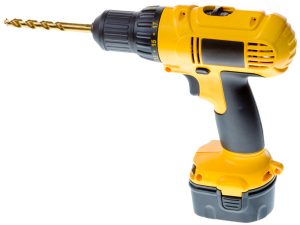
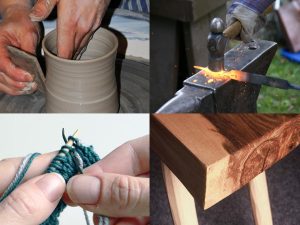

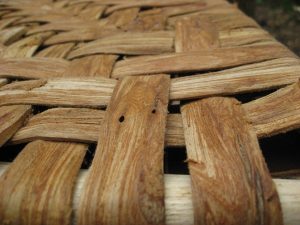
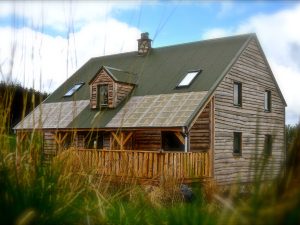
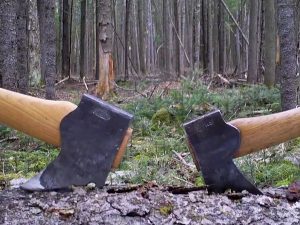
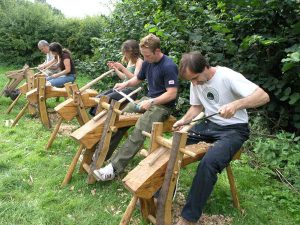
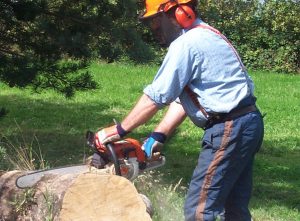
4 Comments
Building A Mortgage Free Home In The UK?
Plum Pictures, The makers of George Clarke’s Amazing Spaces are looking for pioneering self builders who are using clever and unusual design to build their own home without the need for a mortgage.
If you are considering building your own property, no matter how unconventional and will be mortgage free by the end of it we would love to hear from you.
Please contact us at [email protected]
If you’re a hobbyist looking for a CAD software that’s easy to use and powerful, look no further than CADHOBBY IntelliCAD. It’s the perfect software for creating 3D designs and models.
https://www.cadhobby.com/
Great, post Sir.
God Guide you More.
Thanks
To get started with quality timber slabs for river set or similar projects can lead to impressive results, and it doesn’t have to be expensive. Wood is readily available, and sometimes even free if you know a local landowner or tree surgeon, or if you’re able to repurpose old pieces.